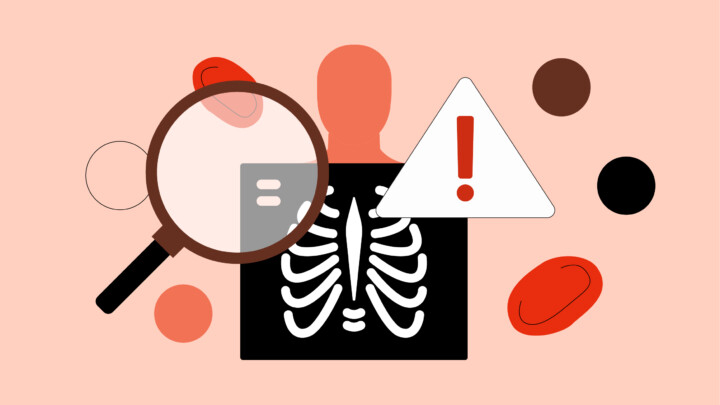
Physician peer review is a cornerstone of clinical quality and patient safety in healthcare. By analyzing and evaluating the clinical performance of healthcare providers, peer review helps maintain high standards of care in US hospitals and other medical settings. It’s far more than a regulatory requirement or a step in accreditation; peer review fosters collaboration, continuous quality improvement, and trust within the medical community. This article offers an in-depth look at the peer review process, how it benefits physicians, potential shortcomings in the literature, and real-world insights on how to tackle common challenges.
The role of peer reviews in quality medical care
The physician peer review process is designed to protect patients and medical professionals by contributing to high standards of care. It evaluates the quality of patient care through retrospective chart reviews, ensuring compliance with established medical guidelines.
Supporting clinical competence
Healthcare providers, including physicians, advanced practice registered nurses, and surgeons always strive for clinical excellence. Peer review is conducted as a robust mechanism to validate clinical competence and each practitioner’s ability to deliver quality care. Through structured evaluations, peer reviewers can identify skill gaps, strengths, and opportunities for professional development, ensuring that clinicians provide the best possible outcomes for every patient.
Identifying and correcting medical errors
The stakes in US hospitals and healthcare organizations are sky-high; medical errors can have business-ending or life-altering consequences. Peer reviews, whether prospective, concurrent, or retrospective, play a critical role in identifying potential issues before they escalate. By providing structured feedback and identifying patterns in care, peer reviewers and committees help practitioners refine techniques, prevent repeated mistakes, and improve patient safety and health outcomes. Peer review is instrumental in reducing errors and enhancing patient safety in clinical environments.
Supporting evidence-based practices
Medicine is data-driven, and adherence to evidence-based practices is vital for standardization and ongoing quality improvement. Peer review provides guardrails for treatments to follow the best available guidelines, raising the bar for care and helping to avoid deviation from scientifically established protocols.
When Sermo asked a small sample of US physicians, “How valuable do you think peer review is in maintaining quality medical care?”, the feedback is overwhelmingly positive:
- 61% say it is extremely valuable
- 34% rate it as somewhat valuable
- 5% remain neutral
- 0% found it not valuable
This poll demonstrates recognition of peer review’s indispensable role in maintaining high standards of patient care and supporting the committee process for quality improvement.
Regardless of who the reviewer is, the process typically follows these steps:
Step 1: Trigger event – A review can be triggered by another physician or staff member who suspects misconduct, by a specific complaint, outlier outcomes or a random audit.
Step 2: Initial review – A committee of peers gathers and reviews relevant documents and evidence.
Step 3: Presentation of findings – The committee shares its decision with the physician, who is informed of the documents investigated and the conclusion.
Step 4: Physician responds with feedback – The physician is given an opportunity to respond with explanations or evidence.
Step 5: Severity and intervention score – The reviewer assigns a score based on severity, ranging from “no error” to “catastrophic error” (patient death), with various levels in between.
Your peer review score could lead to further monitoring or, in extreme cases, disciplinary action by the hospital board or ethics committee. Peer reviews ensure healthcare quality, supporting hospitals, medical staff, and credentialing committees.
How peer reviews protect patients and physicians
The impact of peer review extends beyond just hospital accreditation or committee requirements; it’s also a crucial safeguard for both clinicians and patients. Here’s how the process benefits everyone:
How peer reviews protect physicians
Provides fair and objective performance assessments
Peer review programs are designed to minimize hindsight bias and abuse by providing fair performance assessments. Credentialing committees and medical staff utilize these structured systems to deliver transparent, objective evaluations. This not only helps improve physician performance but also warrants due process for everyone involved, as recognized by The Joint Commission and other accrediting bodies.
A credible peer review process minimizes bias and ensures fair decisions. Impartial reviewers and feedback mechanisms base disciplinary actions on evidence, not personal issues or politics. The AMA emphasizes fairness and due process to prevent baseless sanctions.
Helps defend against malpractice claims
When adverse events or malpractice allegations occur, peer review can serve as evidence that a physician consistently meets clinical standards. Accurate documentation, regular case evaluations, and participation in structured review processes demonstrate a clear commitment to quality care. While peer review records are generally confidential, they can reinforce due diligence if legal questions arise.
Supports continuous learning and skill improvement
Medicine evolves rapidly, and peer review encourages ongoing skill development through actionable insights. This keeps doctors—whether family practitioners, internists, or surgeons—at the forefront of their specialties. It also helps standardize the evaluation of clinical performance across departments and specialties.
Encourages a collaborative, supportive medical culture
When physicians evaluate and support one another, it encourages open dialogue and camaraderie within healthcare organizations. While traditional peer review is often physician-to-physician, interdisciplinary peer review models are becoming more common, especially in systems focused on patient safety, team-based care, and continuous improvement. Peer review nurtures professional relationships and helps physicians from all specialties work as a unified team, boosting morale and overall performance.
How peer reviews protect patients
Identifies medical errors early to prevent harm
Even the most skilled physicians can make mistakes. Whether conducted retrospectively or in real-time, peer reviews help identify errors quickly and prevent possible harm by allowing clinicians to intervene early, before problems escalate.
Helps ensure treatments follow best practices and guidelines
The primary aim of peer review is to safeguard patients by adhering to evidence-based medicine, guidelines, and standards established by The Joint Commission. Helping treatments meet best practices enhances consistency and improves quality initiatives, raising the bar for all patient care.
Builds trust in the healthcare system through accountability
Peer review reassures patients and their families that their health-care quality is taken seriously and continually monitored. When physicians and healthcare organizations openly promote robust peer evaluation, they create an accountable environment that builds community trust and supports system-wide accreditation.
Detects patterns of errors that require system-wide improvements
Reviews conducted by committees or individual peer reviewers often reveal patterns that may affect entire hospitals or networks, emphasizing the need for institutional improvement rather than placing blame on a single practitioner. The Journal of Community Hospital Internal Medicine Perspectives (JCHIMP) notes that these patterns are vital for improving entire systems and reducing adverse actions over time.

Physician peer review challenges and how to overcome them
No system is perfect, and the physician peer review process presents its own set of challenges. Here’s how to recognize and address them:
Potential bias and conflicts of interest
Bias—whether conscious or subconscious—can impede fairness in reviews. Using anonymous review processes, diverse committees, and rotating reviewers can help counteract conflicts of interest, aligning with best practices recommended by accrediting organizations.
Resistance to feedback
Receiving feedback isn’t always easy for physicians. Encouraging a supportive environment, rewarding constructive commentary, and reinforcing the value of peer evaluation helps break down resistance while upholding clinical standards.
Understanding the long-term benefits of constructive criticism on professional growth and patient outcomes can help physicians embrace feedback without feeling personally attacked.
Lack of standardization
A recent study in the British Medical Journal found that reviewers demonstrate modest agreement on individual cases, but a higher level of agreement emerges when cases are aggregated at the organizational level, suggesting that the broader perspective provides more insight than isolated instances.
While peer review is meant to protect patients, it can be vulnerable to misuse due to reviewer immunity and lack of standardization. In some cases, legal protections may enable “secondary gain,” leading to physician termination or defamation despite expert support. Additionally, cognitive biases like hindsight and outcome bias can unfairly skew assessments or otherwise tarnish feedback since peer reviews often occur after adverse events have already taken place.
Without standardization, the effectiveness of peer review is limited, and outcomes can vary across specialties and hospitals. Adopting formal guidelines and checklists improves consistency, which is highly valued by The Joint Commission and credentialing authorities.
Time constraints
The demands of clinical practice often make peer review feel like an added burden amidst an already full workload. When peer review processes are thoughtfully structured—with efficient scheduling, clear delegation, and digital tools to streamline participation—they become less burdensome and more impactful for practicing physicians.
Confidentiality concerns
Major confidentiality concerns include the risk of idea theft, breaches of anonymity, misuse of privileged information, and legal or reputational harm if sensitive materials are disclosed.
Access to hospital peer review proceedings is tightly regulated due to the sensitive nature of the information and the serious consequences of unauthorized disclosure. Both federal and state laws enforce strict confidentiality, as breaches can result in licensure suspension, mandatory reporting to the National Practitioner Data Bank (NPDB), and legal consequences.
The Health Care Quality Improvement Act grants legal immunity for those involved in professional review actions, while also requiring that certain adverse actions be reported to the NPDB. Breaches of confidentiality or failures to report appropriately can lead to serious legal consequences. Most states treat peer review proceedings as privileged and confidential, encouraging candid participation and protecting those involved in good-faith evaluations.
Retaliation fears
Fear of retaliation can discourage physicians from offering honest feedback during peer review. While full anonymity is rarely possible, especially in department-level or hospital-based reviews, bias and personal conflicts can be mitigated through rotating reviewer assignments, diverse committee representation, and consistent use of structured evaluation criteria. Clear due process protocols and legal protections under the Health Care Quality Improvement Act further help foster a culture of trust and psychological safety.
Limited effectiveness
If not properly designed or conducted, reviews may fail to inspire real change. In a cluster-randomized trial, 60 hospitals were assessed to evaluate the effectiveness of peer review on intensive care unit patients who required mechanical ventilation for over 24 hours. The results showed no significant impact on mortality rates, indicating that peer review showed some improvements in adherence to best practices at an aggregated level, but did not affect patient outcomes.
While this example is representative of the impact in intensive care, it does demonstrate potential wider concern and researchers admit that more studies need to be conducted to evaluate the long-term impact of peer review across specialties. Hospitals and committees must train reviewers, use data-driven evaluation methods, and focus on actionable results for every physician and specialty.
Legal and regulatory risks
Improperly handled reviews can invite legal scrutiny, accusations of abuse, or be flagged by the National Practitioner Data Bank. The NPDB contains reports on medical malpractice payments and adverse actions against healthcare practitioners, providers, and suppliers.
Established by Congress in 1986, its main purpose is to promote healthcare quality, protect the public, and prevent practitioners from undisclosed misconduct when moving between states. Staying compliant with legal standards, securing informed committee oversight, and following clear policies diminishes risks and supports accreditation and privileging goals.
Recent studies highlight the importance of peer review guidelines in maintaining scientific integrity, preventing bias, and reducing misconduct. High-quality peer review benefits journals, authors, and the broader research community, fostering trust in healthcare and science.
How Sermo supports peer-to-peer evaluation
While formal peer review occurs within hospitals and credentialing committees, Sermo gives physicians a private space to gain informal input, validate clinical decisions, and sharpen their thinking—often before those formal processes take place.
Whether you’re reviewing a complex case, preparing for a privileging decision, or reflecting on outcomes, Sermo connects you with experienced physicians across specialties for perspective and support.
Physicians use Sermo to:
- Discuss challenging cases and gather second opinions
- Test their thinking before peer review committee meetings
- Identify patterns across specialties that may warrant deeper review
- Stay sharp by engaging in clinical debate and real-world feedback
Share experiences with peer review investigations—including perceived bias, retaliation concerns, or adverse actions—and get peer advice on how to navigate hospital processes or consider legal remedies
By encouraging collaboration and reducing professional isolation, Sermo helps make peer feedback an integral part of daily practice, rather than just a compliance requirement.
Conclusion
Physician peer review continues to be a critical driver of healthcare quality, clinical accountability, and professional growth. When done well, it fosters fairness, strengthens standards of care, and supports both patient safety and physician development.
Whether you’re preparing for a committee meeting, navigating a challenging review, or seeking input on a complex case, Sermo offers a trusted space to connect with peers, exchange insights, and stay aligned with evolving standards.
Join over 1 million verified physicians using Sermo to collaborate on the issues that shape medicine—from clinical decisions to the peer review process itself. Your voice strengthens the profession. Let it be heard.















